|
NORTHERN HARDWOOD FOREST
Broadleaf forests, is the name generally used for hardwood trees. These are mainly found in the northern Belize River valley. This is predominately a lower area, less than 300 feet above sea level. The dominant soil are underlain, at various depths, by limestone rock. Annual rainfall is less than 81.3 inches, and in most years, March, April and May are noticeably dry, with less than 5 inches of rainfall per month. The average temperature, for much of the year, is about 73.2 degrees F during the months between November and February. Since this temperature is much wider than that found in a truly tropical environment, and the three-month dry season can be quite pronounced. SOUTHERN HARDWOOD FOREST Broadleaf forests found mainly on the limestone foothills lying south and east of the Maya Mountains. Here, one can find the largest continuous foothill forests, in the Columbia River Forest Reserve. The average annual rainfall exceeds 150 inches. The dry season is usually brief, three weeks to about one-and-a-half months. The average daytime temperatures are relatively uniform, ranging from (77 degrees to 86 degrees F), and cool night temperatures are rare. The forest covering most of the foothills and some adjacent lowlands has been designated as sub-tropical to tropical humid evergreen broadleaf forest. MOUNTAIN & PINE RIDGE The Mountain and Pine Ridge area, has fairly distinctive vegetation consisting mainly of pine forest and Savannah grassland. Mountain Pine Ridge vegetation occurs in the Maya Mountains upland in localities where the soils are mainly derived from granitic rock. This landscape is ancient and most of the soils are deep, very acidic, strongly weathered, and leached of very essential nutrients to support broadleaf forest trees. The vegetation is a patchwork of coniferous trees, Savannah grasses, hedges and a few scattered populations of woody trees and shrubs. HIGH ELEVATION SOUTHERN MAYA MOUNTAINS This region of Belize, is difficult to access and is characterized by a mountainous terrain, steep slopes, deeply incised valleys, and rocky watercourses partly filled by debris caused by natural erosion. This type of terrain extends from about 1,320 feet above seal level to a little over 3,300 feet. It is expected to be cooler an perhaps wetter than any other climatic region of Belize, with night temperatures in the (50 degrees F to 70 degree F), and annual rainfall to be somewhere around (250 inches to 300 inches). Regular strong winds are a major factor in this area, and periodically, the forest cover has been locally devastated, by winds of hurricane force. The soils are mainly derived from hard metamorphic, sedimentary rocks. Large quartz veins are common, in this region. Most soils are thin, rocky, with very steep slopes. THE CAYES The cayes are a cluster of offshore islands, with a total land area of approximately 116 square miles. The rainfall is about 40 inches per year in the northern cayes and about 65 inches in the southern cayes. These are islands are just as a few feet above seas level. The land base of these islands, is usually coral sand with a local accumulations of ragged coral rock rubble. Coconut palms are evident throughout the cayes, reminding us of their importance in the economic history of this country. Soils found on these offshore islands consist of either limestone sand or organic debris. In most cases, there is a brackish water table not too far from the land surface. However, in some places, a lens of fresh water is found in the water table, supporting trees and other vegetation.
0 Comments
 HOGFISH TIME - In Belize Hey went spearfishing with my two best buds yesterday in Belize, (Dennis Matus & Randy Smith). Randy missed it, but I got him!!!! A big male Hogfish. It was a great experience, I truly love spear fishing. This is one of my favorite fish to catch, because it tastes so good. The Hogfish is a species of fish, which belongs to the Wrasse, family. The Hogfish is one of the larger species of wrasses and is very abundant here in Belize. The Hogfish has a very elongated snout which it uses to search for crustaceans buried in the sediment. Interestingly it is from this very long “pig-like” snout and its rooting behavior, that the Hogfish gets its name. A prominent black spot behind the pectoral fins, differentiates male from females. The dorsal fin, usually is composed of three or four long dorsal spines followed by a series of shorter dorsal spines. A very interesting fact about this fish..........a Hogfish, can change sex during different life stages in its life.. A Hogfish can start out as a female juvenile and then after a certain age mature to become a male. The change usually occurs around 3 years of age and about 14inches in length. Males are signified by their coloration and have a deep dark band spanning from their snout to the first dorsal spine as well as the lateral black spot behind the pectoral fins. Hogfish reach a maximum size of about 3 feet and approximately 22 pounds and have been recorded to live up to 11 years. I have one female and one male Hogfish in the picture above. These are going to make good eaten tonight! Crank up the stove and put the drinks in the refrigerator mom - we've coming home!  TRENT'S WALK IN BELIZEAN JUNGLE (Part Seventeen) Is brought to you by Grand Belizean Estates, the next place to call home  JACANA SIGHTING - Jesus Christ Water Walker There are eight species of this lively little lily-pad trotter, only one of which resides in the marshes, ponds and other waters of Belize. Also known as the Jesus Christ bird (for walking on water), Jacana's live wherever there is floating aquatic plants thrive. The Northern Jacana is known by many of the locals as either the "Georgie Bull" or the "Jesus Christ" bird. It hops daintily from lily pad to lily pad with its long and spindly toes in search of water bugs, tiny fish, or small mollusks. It stalks the water hyacinth and steals its seeds. This slender bird attains a top-to tail length of 9"-10". It is cinnamon red with a vivid yellow forehead shield on its black head and yellow-greenish patches on its wings. With neck extended and long legs dangling, as it flies it flashes the yellow under pinion of its rounded wings. As it alights, it stretches high its wings before folding them neatly behind its back, tucking in the spurs at the crook of its wings. The inmature jacana is gray-brown above and whitish below, with a distinctive wide white stripe above the eye. Jacana's are eminently noisy! Along with the Jacana's generally charming appearance goes a voice with many songs - most of them raucous. In argument with its fellows, it chatters and chuckles. In flight it makes a sharp cackle. It calls out with a single, rasping note or emits a plaintive whistle. In some respects, it resembles the sound of a portable typewriter. The breeding season is April and May. As a nest, the Jacana uses a floating platform it has contrived of stems and reeds; upon this thin, flat, flimsy surface it lays as many as four eggs. Each spotted and speckled in excellent imitation of the next. It is the male Jacana which does most of the egg-sitting (or babysitting), a matter of 22-24 days and, when the eggs have hatched, the male Jacana will continue baby-sitting, his little chicks. Look for the Jacana, at the footbridge on Bird's Isle - here in Belize.  TRENT'S WALK IN BELIZEAN JUNGLE (Part Sixteen) Is brought to you by Grand Belizean Estates, the next place to call home.  Agouti AGOUTI PACA GIBNUT SIGHTING The paca is known officially known as Agouti paca; in Belize it is unofficially called gibnut, and also known as "the royal rat". Ever since the British press got ahold of the fact, that this delicacy was served to the Queen of England when she visited. The Gibut is from the rodent family; as is the rabbit, which is also a popular food source is all of Europe. Although they occupy the same environment - low to middling elevation of delicious or rain forest throughout Central America and beyond, both north and south - their lives do not often cross. Agoutis are diurnal (daytime) creatures while pacas are most decidedly nocturnal. The latter wears a handsome brown coat with horizontal rows of creamy spots down the sides which makes it prized by leather craftsman. The agouti, is a girzzled fur several sizes smaller, has longish hair on its rump which it can stand up on end to fool a pursuing enemy into thinking that there is more to agouitis than meets the first impression. Nature has provided the paca with a protective trick, whereny itides over a thick connective tissue, making it very difficult to grasp. It also has expandable cheekbones which not only increase the skull mass but also make an interior sounding box to amplify vocal threats or to resonate the ominous sound of grinding teeth. Pascas confront each other head to head, slashing out with outsized incisors, but when approached by a predator they turn and run to the nearest body of water, where they can stay submerged for quite some time. If this source of refuge is unavailable - and and the paca is only a short distance runner - then it will leap away and "freeze" in its landing position, sometimes holding the pose for as long as 45 minutes. The agouti uses a different defense altogether, running around in circles and squealing - making it easy prey for any aggressor with a bit of sense. Both of these littel beasts are seed and fruit eaters, the agouti especially adept at cracking open the harest seed coats. It sits on its haunches as it eats, using its forepaws to rotate the food and at the same time keeping a watch-out for foe. It stores seeds in the ground for future reference, placing them in intermittent patterns to confuse the thieving peccary, and in so doing acts as an absentminded propagator of all sorts of plants. The less energetic paca stores food as fat. It prefers to eat in the darkest possible corner of the most sheltered spot available, perhaps dispersing a few seeds during the transporting from source to secret nook. Odor plays an important role in inter-agouti communication. They mark the trails, the eating spots and the sleeping quarters within their 2-3 hectare home ranges by dragging their perinea along the ground, leaving a glandular secretion. Pacas use this signature for purposes of aggression. Males of both species spray their brides to make their claim. The young are already quite mature at birth. In fact, the newborn agouti is taken by its mother to several suitable nesting sites - i.e. holes too small for coatis, tayras, and other enemies, but also for the mother - and, when the baby has made its selection, it goes about furnishing its nursery with twigs and leaves. The mother will come each morning and evening, calling the baby out to be cleaned and fed. At the Belize Zoo, you can find out who's who.  TRENT'S WALK IN THE BELIZEAN JUNGLE (Part Fifteen) Is Brought to you By Grand Belizean Estates, the next place to call home. 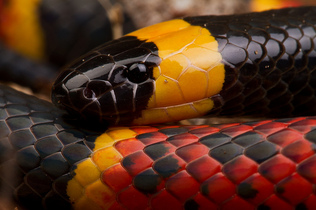 CORAL SNAKE SIGHTING Although there is a certain validity in its bad repute among mankind, the coral snake does not deserve the wishes terror it usually evokes. Its venom is indeed highly neutrotoxic, but this small snake is not at all provoked by being stepped on. It has a very small mouth, making it hard for it to attack much like other snakes. Should it manage to latch on at all, it then has the tedious task of having to inject the venom by way of a chewing motion, forcing its fangs forward and slowly pumping out the poison. If the victim does manage to keep his wits about him, he will quickly find some way to remove this reluctant attacker before definitive damage is done. The coral snake is from the Elipidae family, which has about 40 different member species, mostly in south and Central America (but only 3 varieties are found here in Belize), the coral snake has a narrow head, its dorsal scales enlarged and arranged symmetrically; there is no discernible neck, so that the head is followed by a long, slender, tapering body, adding up to about 80 cm in all. Its fangs are fixed in position, up front, and they are grooved. This snake tends to be a secretive night creature, burrowing in the ground, and using such underhanded tactics as pretending that its tail is its head so that its mouth is then free to sneak up on small prey from behind. Its eyes have circular pupils, a mimicry of innocence. The cordalilo, as it is called in Spanish - comes in various color combinations. The most common in Belize is the Atlantic coral snake, found throughout the country in jungles, rain and pine forests, scrubland, and village yards. It is striped in alternate bands of red and black, the black often trimmed with yellow, the red scales individually tipped with black so that it makes a speckled effect. Unless there has been heavy rainfall, it dozes away the day inside a burrow, or under a stone, a fallen branch, a pile of leaves. Its meter long cousin, is ringed in solid red, solid black, and yellow or white and is found only in the Cayo and Stann Creek Districts; the black banded of similar length, limits its territory to the Stann Creek Districts only. If you happen to come face to face with one of these pretty snakes, do to it what it would no doubt prefer to do to you; take off in the opposite direction!  TRENT'S WALK IN THE BELIZEAN JUNGLE (Part Fourteen) In brought to you by "Grand Belizean Estates", the next place to call home.  TOUCAN SIGHTING The toucan is a specialty of tropical America. In Belize, the keel-billed toucan has been designated the national bird in honor of its hilarious beauty. THE TOUCAN'S BEAK When you see the capsized canoe beak (in rainbow hues) of the toucan, it is hard to imagine, that the bird could ever manage to roost high up into the air, much less pick up and cut fruit. This beak is an amazing when it comes to structural engineering. The horny outer shell is reinforced with a network of inner cellular fibers, providing strength without debilitating weight; it feels like laminated basla wood, but the serrated edges are more mindful of a stainless steel paring knife. The coloration is beyond belief: apple green, with an elongated orange triangle laid out along the lip of the upper beak and a streak of powder blue whisping across the lower beak. The beak is attached to the toucan's head by a black, patent leather strap. Science speculates that this gaudy display intimidates potential foe, but perhaps it simply bedazzles them, riveting them to the spot while the toucan decides on the best escape route. THE TOUCAN'S BODY Feather wise, this black bird wears a perfect bib of lemon yellow and, beneath its tail, a flash of cadmium red. Greenish skin rings its eyes. And, after all this and all that, its legs and feet are, unbelievably, an iridescent blue. All things considered, the keel-billed toucan is an amazing bird! THE TOUCAN'S DIET The toucan generally feeds on the fruits of larger forest trees. With its beak, it rips off a chunk from the fleshly portion; it juggles the morsel with the tip of its bill until it is positioned just so and then, with a toss of its head, it flips the food into the air and catches it somewhere en route to its throat. It drinks water in a similar fashion, dipping its bill below the surface, then lifting it high, making of it a gutter to conduct the liquid down. Toucans also eat insects, lizards and snakes, and have been known to help themselves to oropendola eggs. THE TOUCAN'S HABITAT This bird prefers large trees in open areas. It nests in holes such as those made by woodpeckers and which it will enlarge by removing dead wood - but only enough so that it can fit comfortably when folded up, its bill down its back and its tail hinged forward. Two to four white eggs are laid. The parents take turns with the incubating as well as with the task of filing the baby bills. The nesting stage is prolonged, lasting up to nine weeks. These social birds may flock, in groups of six to eight, and often hold forth in a monotonous creaking croak. At the Belize Zoo, there is a Toucan named Rambo (originally Rainbow). If you catch him in the right mood, he will "purr" for you while you scratch his head. So next time you're in Belize, stop by the Belize Zoo and say hello to Rambo for me. Had a great weekend with all my friends, just wanted to share some of the photos.  TRENT'S WALK IN THE BELIZEAN JUNGLE (Part Fourteen) Is brought to you by "Grand Belizean Estates" the next place to call home.  WHITE LIPPED PECCARY SIGHTING Belize has two species of Pecari's - Collard & White-lipped. Both of these species reside in just about any sort of habitat, from rain forest to semi-desert, ranging from New Mexico/Arizona (in the USA) all the way to Argentina in South America. These mammals are hoglike, with small hooves supporting a disproportionately pudgy body which weighs in at 30-60 lbs., including its hairdo of long, course bristles. Its back bears a scent gland which secretes a perfume appreciated only by others of its kind. Up close, these hogs stink! Peccaries are gregarious beasts which travel in herds of up to 15 for the "collars" and 30 feet for the "white-lips". Within their species, they will bed down together for warmth in thickets or caves, and practice mutual rubbing - of the head, against the others scent gland - especially upon meeting. Group defense is also practiced, a matter of pooled resources as they have poor vision and only fair hearing; despite this, they are surprisingly speedy and agile, favoring offensive techniques such as the frontal attack. They have quite a lot to say on the subject: a loud bark serves as a general alarm, aggressive grumblings may suggest a warning to intruder or opponent alike, and the clattering of teeth may proclaim the threat. However, within the herd peace is usually kept by a defined order of dominance, most often matriarchal. It is then that a kind of peccaric purring is heard in the land. The peccary's sense of smell is commensurate with the mobility of its rubbery snoot, and it can sniff out bulbs, roots, and tubers hidden well under the ground. White-lipped peccaries may spice up their diet with grubs, insects, and small vertebrates. Fruits are a favorite with all, including the prickly pear where available; seeds other than those of the fig are crushed by molar activity and thus are not dispersed by way of itinerant peccaries. Crops, such as maize, beans and squashes, may prove irresistible. White-lipped peccaries have a gestation period of approximately five months, and breeding apparently occurs in any season, whereas gestation for collared peccaries is less than four months and culminates in May. Up to four but usually two young are born to a litter, a hollow log or someone else's abandoned burrow serving as maternity ward. After only one day, peccary piglets are able to accompany their mother as she goes about the business of eating - all day long.  TRENT'S WALK IN THE BELIZEAN JUNGLE (Part Thirteen) Is brought to you by "Grand Belizean Estates" the next place to call home.  COATIMUNDI SIGHTING The Coati was given its name by the Tupian Indians of South America. The reference is specifically to gregarious Coatis, while loners are called Coati-mundi. Originally, these were considered separate species, rather than a single species with strong individual preferences, when it comes to the question of co-habitation. In any event, in Belize the Coati is called a "quash". Generally, the division is between the bands of females - mothers with the young of their last two litters in tow, and a non-breeding female or two tagging along - and the mature males who - one by one leave the band and establish individual territories. These will tenaciously maintain their bachelor quarters, running off intruders of either sex,. Bands will also keep up an exclusive core range, but all Coatis will venture outside their territories in order to obtain certain fruits and, in this event, these extended ranges may overlap. The squash is dressed up like an old, faded raccoon cap - a ringed tail sometimes carried upright. Add some fancy eye makeup an elongated snout, coupled with its keen sense of smell, and the effect is most appealing! Its claws, however are not cute, but rather are precision instruments, sharp and curved, which helps them in climbing the tallest trees and to walk the smaller branches. On the other hand, their strong but blunt fore-claws specialize in helping them rip apart rotten logs and in digging into other people's burrows. These enthusiastic omnivores eat just about anybody; insects, snails, lizards, and mice, as well as a wide variety of fruits. Quashes will squabble among themselves over who is to get the juiciest milipede. Although there have been recorded incidents of sharing food and co-nesting, even within the bands it is every quash for himself - except when it comes to grooming. This is an important part of the community's health program, and everyone is expected to participate both as groomer and groomees. Gestation takes ten or eleven weeks, so that the litters arrive around the end of April. A pregnant female will leave the band about a week before her due date, and will establish her nest in a tree. There the young will stay for their first five weeks, under the care of their mother - until they are able to travel, at which time the mother will introduce them back into the band,. Females are retained as permanent members to the band, while males maintain an extended temporary residency - for nearly two years. or more Bands may number as many as twenty. Boats, birds of prey, wild cats and Tayras are the natural enemies of the Coati. People make pets of them, taking them when young and often discarding them when they reach maturity, when they lose their initial appeal, They possess a good temperament and readily adapt back into the wild.  TRENT'S WALK IN THE BELIZEAN JUNGLE (Part Twelve) Is brought to you by "Grand Belizean Estates" the next place to call home. 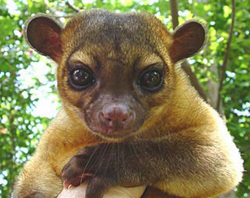 KINKAJOU SIGHTING Kinkajou's are known by two names here in Belize: Nightwalker and Honey Bear. This honey bear or the nightwalker, is an arboreal member of the racoon family, although its prehennsile tail might tend to fool you into thinking that it is no kin to the coon. The kinkajou's tail is about 16-22 inches in length, long enough for twining around a branch to take on its full weight (3 to 7 lbs). Additionally, it uses its tail as a counterbalance (to its movements), as it runs along a branch, as a grappling device. This tail alows the Kingkajou to make tricky, treetop maneuvers, which are highly entertaining. It sports a coat of soft, short fur, tan to brown, with a tawny underbelly. Even known to be a special pet to Paris Hilton, to say the least. It uses its front paws, for plucking fruit and breaking it into bite sized pieces. With its long and narrow extensibe tongue (wow! what a tongue), it can get its way into bee's nests and lick the hives clean of all honey. Thus the name honey bear. His tongue is also great for obtaining the nectar from various flowers. The kinkajou sleeps during the day, in a hollow tree. By night it prowls, along the forest floor looking for fallen fruit from the various rain forest trees. The Kinkajou is usually a solo animal, meaning that it is happy to travel alone - although it does congregate with others from time to time. Aside from growls and barks, kinkajous communicate by scent, marking out their territories with the secretions from the glands, located at the corners of their mouths, on their throats and bellies. A kinkajou has only one baby at a time. When born, its eyes are tightly shut, and then at ten days old, it can see. By seven weeks it is already hanging upside down on a branch, and is considered full grown at one year. |
Trenton Turley
Hi, my name is Trenton S. Turley. I've been living in Belize now for 11 years. Hope you enjoy reading my many blog posts. I write about things, that are passionate to me.
SNAKES OF BELIZE!
Check out, my my current blog series on Snakes of Belize. Categories
All
Archives
April 2016
|


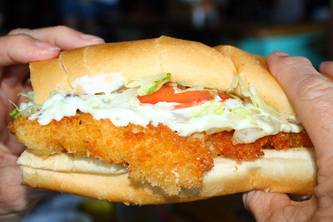








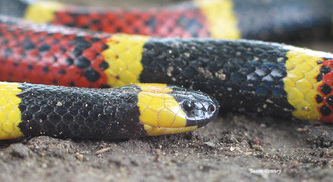

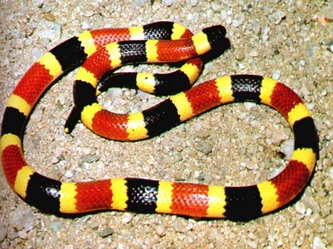


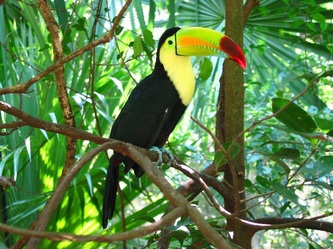







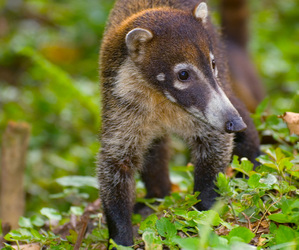


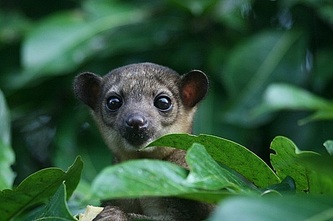
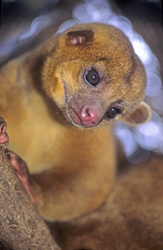

 RSS Feed
RSS Feed